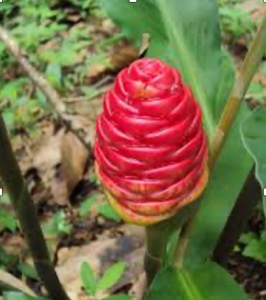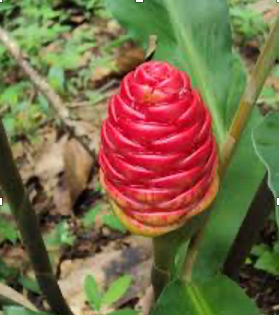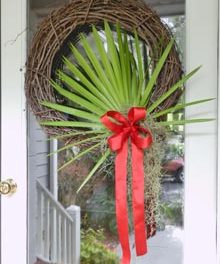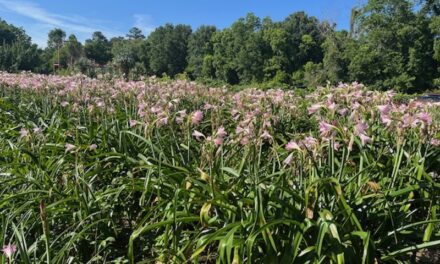 ‘Ginger’ is an appellation used by so many species, it’s impossible to know just which species they are. Only one, however, is the edible ginger we buy in ‘hands’ at the market; Zingiber officinale. You can easily grow this rhizome by breaking off a piece of the hand which has a node, and planting it. All gingers prefer dappled sunlight and moist, but well drained soil. However, I’ve seen some in full, all-day sun which are thriving
‘Ginger’ is an appellation used by so many species, it’s impossible to know just which species they are. Only one, however, is the edible ginger we buy in ‘hands’ at the market; Zingiber officinale. You can easily grow this rhizome by breaking off a piece of the hand which has a node, and planting it. All gingers prefer dappled sunlight and moist, but well drained soil. However, I’ve seen some in full, all-day sun which are thriving
All true gingers belong to the family Zingiberaceae, but here it gets really confusing as to orders, genus and species, so we’re not going to go there. Suffice to know that gingers grow in tropical and sub-tropical areas, and since we’re sub-tropical, we can grow most of them.
Some gingers, as we all know, can quickly outgrow their space and would be considered invasive in tropical areas. Even here, they can be thugs….lovable, but none the less, they can be a nuisance.
The flowers of almost all gingers are exotic and colorful. Some, like the Butterfly Gingers (Hedychium) are also deliciously fragrant. They’re great pass-along plants because they belong in the “thug” category. You’ll always have plenty to give away to an unsuspecting neighbor. The flowers of these gingers can vary in shape considerably. Most stay in the white to salmon range and are very desirable as cut flowers.
Many years ago, a nationally known shampoo company touted their product as containing “Awapui”; supposed to make your hair glossy and beautiful. Well, Awapui is the Hawaiian name for Zingiber zerumbet, also known as “Shampoo Ginger.” The flower is a bright red, pinecone shaped flower, about 4 inches tall, which when squeezed, will emit a sap which can be used to shampoo your hair. Even today, a high-end shampoo by Paul Mitchell is said to contain it. The cone stays vibrant on the plant for quite a while, so it’s a desirable landscape plant, too.
Some gingers are called ‘Hidden Gingers” because the flower is at the base of the plant and obscured by the foliage. If it’s colorful enough, though, you can find it.
Others, like Heliconias, known as Lobster-Claws, are dramatic and very visible. These can sometimes be grown here if you have a spot in your garden that is protected, but it’s iffy. In the tropics, they can get 15 feet tall and are popular landscape plants in South Florida.
Shell Ginger, or Alpinia zerumbet, is a great accent plant. Its variegated foliage is a stand-out in shade, but given enough sunlight, it will produce a raceme of lovely, funnel shaped flowers. Their foliage can be either green and white, or yellow and green. The intensity of variation varies from plant to plant. When mature, they can get quite large; up to 5 or 6 feet, as just as wide.
Costus is another plant that hardly knows where it belongs in the botanical table. Costus alone has over 150 species and the one most often found is Costas barbatus, also known as Spiral Ginger. They’re so named because the stems can often spiral with the rigid leaves on the outside of the spiral. Unique with interesting flowers. You don’t see them much down here, but they’re said to be hardy in the Lowcountry. There is even one species of Costus that has sweet and nutritious flowers!
The ‘Siam Tulip’ is actually a ginger – a Curcuma, and can often be found in box stores in early summer. The delightful pink flowers do look somewhat like tulips. The powdered rhizome of another Curcuma is the source for the spice Turmeric.
By and large, Gingers are quite carefree. Plant them where they’re happy – part shade or sunny but protected from hot afternoon soon, and in moist but well drained soil and you won’t have much to do except enjoy the show. They are enthusiastic reproducers, so you’ll need to thin them out from time to time. Deer don’t seem to like them much, and will rarely nibble on most. The selection of species and cultivars is very wide, and almost any garden could benefit from a few.









